The art of Chigiri-e, tearing or cutting handmade paper to make art, is beautifully illustrated by the works of Barbara Harmer. Visit her website to see more of her gorgeous art.
.
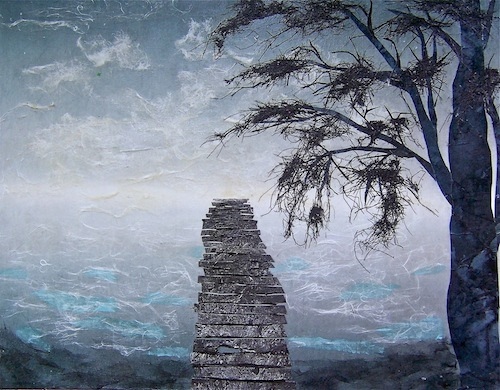
“Misty Dock” Handmade Japanese Paper on Gallery Wrapped Canvas, 16″ x 20″
I studied “Chigiri-e,” (Chee-gee-ree-ay, which means “to tear art”) in an unusual way while living and working in Japan. My teacher didnʼt speak English and I didnʼt speak Japanese, so I could only observe, unable to ask questions. I changed the style to reflect my own American taste, and thus deviated from the traditional Japanese style.
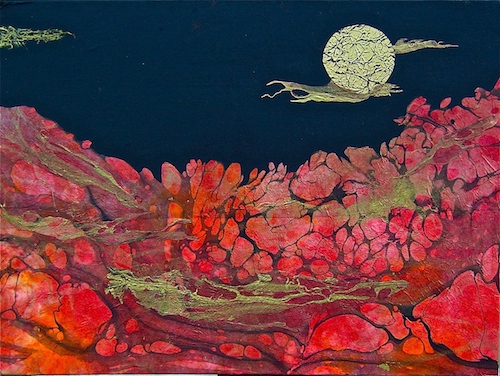
“Sea of Fire” Handmade Japanese Paper on Gallery Wrapped Canvas, 18″ x 24″
Chigiri-e originated in Japan after Chinese Buddhist monks brought the art of papermaking to Japan in 610 AD. It involves using handmade Japanese paper, and tearing and cutting it to create art without paint.
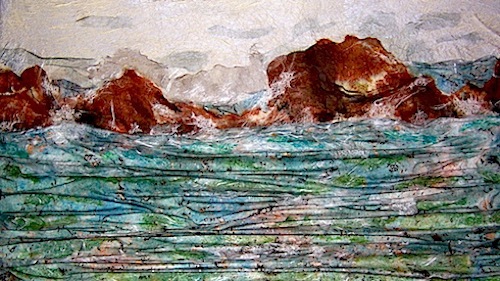
“Jetties” Handmade Japanese Paper on Gallery Wrapped Canvas, 24″ x 36″
I often have to convince people that my art doesnʼt contain paint, as all the color comes from the hand-dyed, handmade Japanese paper called Washi. When dry, I seal the piece with a clear non-yellowing varnish or epoxy resin.
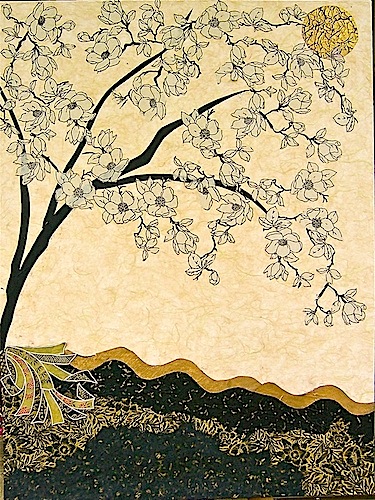
“Magnolias in Bloom” Handmade Japanese Paper on Gallery Wrapped Canvas, 24″ x 18″
Inspiration comes from nature, photos, my imagination, dreams and themed art shows. Sometimes the paper takes on a life of itʼs own and dictates how the finished piece turns out. I donʼt fight it and it usually works itself out.
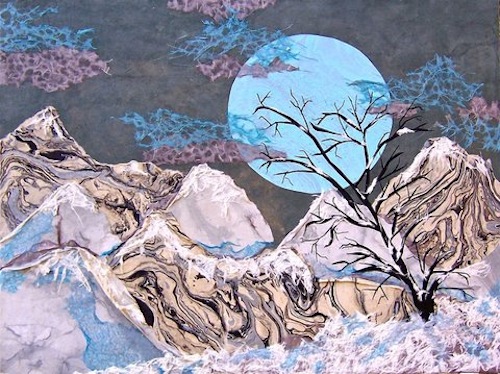
“Bubblegum Moon” Handmade Japanese Paper on Gallery Wrapped Canvas, 18″ x 24″
I begin either with a design in mind, or by looking at my fifty-plus baskets of paper arranged by color in my studio. If a particular color or pattern jumps out at me, then I pull it out of the basket and work from there.
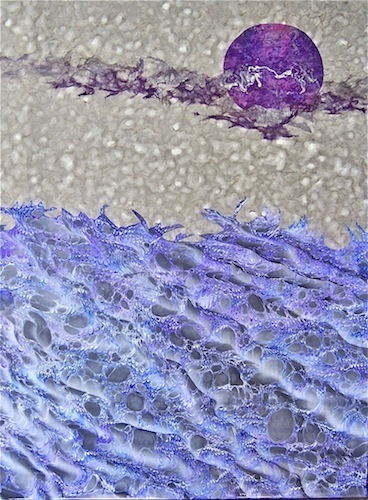
“After the Storm” Handmade Japanese Paper on Gallery Wrapped Canvas, 24″ x 18″
There are so many colors, weights, fibers and textures of paper, that there seems to be a paper for whatever look Iʼm trying to achieve. The paper that I use for shading is so thin, it is ten times lighter than the weight of our American tissue paper, and can only be purchased from Japan.
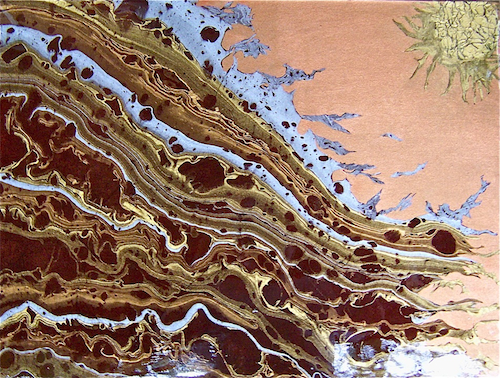
“Tsunami” Handmade Japanese paper on gallery wrapped canvas, 18″ x 24″
Other papers include many fibers that look like straw. It is extremely important to choose the right paper for the effect Iʼm trying to achieve.
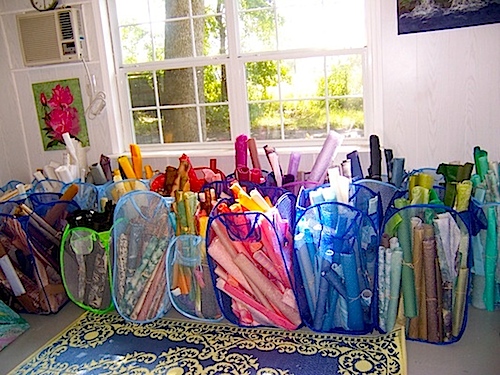
Studio shot with papers used in Barbara Harmer’s work
Painting with paper is eco-friendly and green. The fibers come from various bushes and plants called Kozo (Mulberry), Mitsumata, Gampi, and Hemp. These plants are easily regenerated, so no trees are destroyed in the production of Washi.
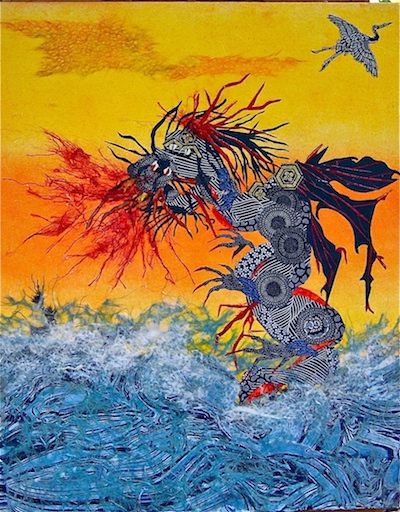
“Fantasy Dragon” Handmade Japanese Paper on Gallery Wrapped Canvas, 20″ x 16″
I am truly “addicted” to beautiful handmade paper, and my studio reflects that with baskets filled with gorgeous colors, fibers, textures, and different weights of handmade papers. I eagerly go into my studio everyday with my artist’s palette arranged in baskets before me, and get lost in the rainbow of colors, ready to fantasize my next creation.
Barbara Harmer invites you to follow her on Facebook.




Barbara your work is stunning — composition, color, all of it! The technique is so amazing. It is a pleasure to see your art — thank you Carolyn for introducing it!
I agree, Roberta. Barbara’s work is so unusual and fascinating. It’s a pleasure to feature her.
Thank you so much Roberta, I’m grateful for your positive and encouraging comments. Yes, I am so happy that I was chosen to be a featured artist, and for Carolyn in accepting me.
I must say it is an honor to see all her art come to life as she makes them. I am Barbara’s daughter Lynne and I have fallen in love with watching her passion for her art. She is truly addicted to the paper haha ! She never ceases to amaze me with ever single piece she makes.
Yes, Lynne is my right hand gal. I rely heavily on her for all the heavy work when we set up tents in art festivals.
She is my champion, my best art critic, and my constant reminder to eat or drink something while I’m creating in my studio. Couldn’t do it without her.
Love you, Barbara and Lynne…and your work is fabulous always…….it just gets more and more imaginative every day. I so enjoy being your artist friend…many hugs!
Marilyn, I really appreciate the praise you have graciously given me. It means so much coming from such an accomplished artist as you. I have admired your art for quite awhile, and if you haven’t done so, please apply to the next Call to Artists from Artsy Shark, so the rest of the world can enjoy your art too. Thanks again, my friend.